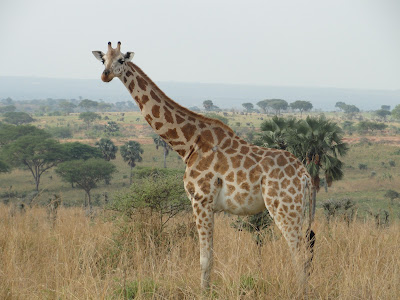Term 2 of the Ugandan school year started recently. I suppose I will take this time to explain a bit about the Ugandan school system. Be sure to take everything I say with a grain of salt cause I am still learning the intricacies of it (Blasted British influences).
 |
| They don't have spring mattresses here, instead it is just a big piece of foam |
1. You are able to start school around age 3 in nursery, but many children don't due to cost and wait till age six and just go straight into Primary 1
2. There are 3 levels of nursery: baby class, middle class, and top class
3. You then move onto primary which there are 7 classes. P1 up to P7
4. P7 is a very important year cause you take your first permanent record exams and the results determine which secondary school accepts you
5. These exams are called PLE (primary leaving examination). This past holiday we for the first time implemented holiday tutoring. We paid some school teachers to come out to our land and work with the kids that were approaching the important exam years. It allows them some extra study time and more attention from the teachers due to the reduction in kids present.
6. Because of their importance many kids in P6 and P7 go to school longer hours and even attend on Saturdays.
7. Then you go on to secondary. Secondary is the equivalent of high school
8. There is technically S1 through S6, but many don't continue on after S4. From what I have gathered S5 and S6 are preparatory years for University. So, if you plan to pursue vocational or can't afford University then you often stop after S4
9. At the end of S4 you take another set of exams that allows you to pick a future track of study. These exams are called your "O" level exams and basically there are different subject combinations that you can choose to focus on based on your scores which theoretically will prepare you for a University education in that field
10. High school, secondary, college are all terms that describe these S1-S6 schools. University is the only term that refers to what we know as college. Pretty sure that is the Brits again.
11. There are 3 terms of school, which are all about 3 months long with about 1 month in between each
12. School year starts at the end of January or the beginning of February and ends beginning of December
13. Ugandans seem to define real success as finishing through University despite the fact that the majority of work available is vocational. Also, they seem to believe that boarding school is always better. Most decent secondary schools are boarding and most families will send their kids to boarding even in primary if they can afford it. This means that kids as young as 6 are shipped off for 9 months out of the year. I don't like primary boarding and see it to be nearly the same as orphanages. I don't want to say luckily, but I am kinda glad most families can't afford to send their kids to primary boarding. *This is my take on it
14. If you have read this far into these details I am impressed and want to thank you for your interest in all that I do. Also, you obviously care about me more than those who skipped over and I therefore think you are much sweeter. I will add one more fact at the end as to hide this from the lazy readers who don't deserve my gratitude.
15. School fees and school supplied significantly increase as you continue on in your education. I making rough guesses here without looking at any of our numbers so these could be off. Nursery around $25-$50 a term (day school). Primary $35-80 per term (day school). Secondary $250-$500 per term (boarding). University $500-800 per term.
Alright on to the interesting stuff. There are many things than need to occur to get all 581 of our kids back in school. First, we have to pay school fees at over 35 schools. This is becoming easier because we are pushing for the schools to allow us to do bank transfers so we no longer have to run the actual cash to the school.
 |
| These are the trunks (or as they are called here suitcases) that the boarding students load all there stuff in and take to school to use as footlockers |
Our current system operates like this. Oliver, the mentors and myself go and buy about 4 pickup loads of supplies and bring them to my house. They are then stored in my living room until the day before the secondary kids go back to school. We then hire a flatbed truck to come and load all the stuff up to take it to the Amazima land where it will be sorted, bagged, and distributed (side note: we are hoping to build a bigger storage building at the land to accommodate this as well as some of future farming plans).
 |
| My living room leading up to 1st term |
 |
| My living room leading up to 2nd term |
 |
| Loading the big truck at my house to take the supplies out to the Amazima land for distribution |
 |
| Oliver hard at work. I love this woman and would be lost without her. |
Once supplies are distributed then I thank the Lord for the opportunity that Amazima supporters are giving these kids and pass out from exhaustion. Again, thank you all for taking interest in how God is working all the way on the other side of the world. Most of all thank you for your prayers.

















